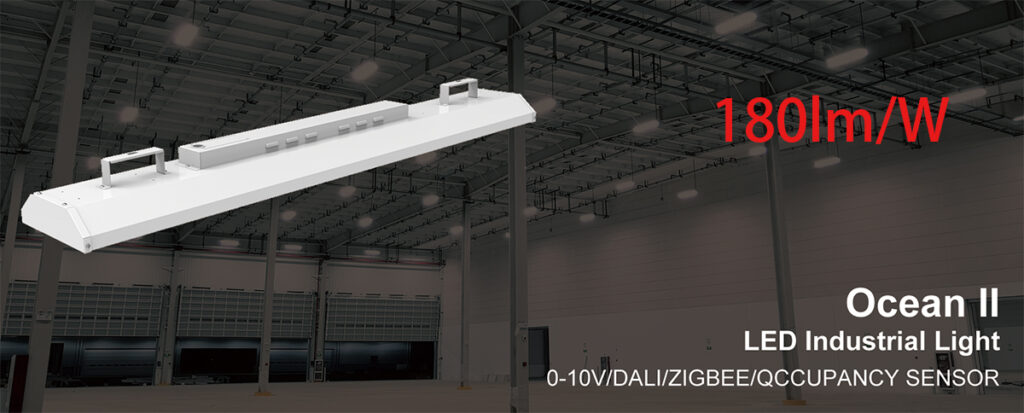¿Qué es la distribución simétrica y asimétrica de la iluminación LED?
Distribución simétrica y asimétrica de la iluminación LED
Con el progreso continuo de la tecnología de iluminación LED, las distribuciones de iluminación simétrica y asimétrica se han convertido en dos métodos importantes de distribución de la luz. Cada uno tiene sus ventajas e inconvenientes, en función del proyecto de iluminación. Este artículo explicará cómo seleccionar distribuciones de iluminación simétricas y asimétricas adecuadas para proyectos específicos, combinando las ventajas de los productos de nuestra empresa con casos prácticos deportivos e industriales.
Distribución simétrica de la iluminación
La distribución simétrica de la iluminación se refiere a la distribución uniforme de la intensidad luminosa en las direcciones horizontal y vertical de una fuente de luz. Este tipo de iluminación se utiliza mucho en lugares que requieren una iluminación uniforme, como oficinas y centros comerciales. Las ventajas de la distribución simétrica de la iluminación son:
-
Iluminación uniforme y gran confort visual.
-
Evita eficazmente los problemas de deslumbramiento y sombras.
-
Eficiente energéticamente, respetuoso con el medio ambiente y duradero.
-
Las fuentes de luz simétricas distribuyen uniformemente la potencia luminosa, reduciendo las sombras pronunciadas.
Por ejemplo, en un entorno de oficina, el uso de una distribución simétrica de la iluminación puede proporcionar una iluminación uniforme para las tareas visuales, haciendo que el entorno de trabajo sea más cómodo y evitando al mismo tiempo los problemas de deslumbramiento y sombras. Esto no solo mejora la eficiencia laboral de los empleados, sino que también garantiza su salud visual.
Distribución asimétrica de la iluminación
La distribución asimétrica de la iluminación se refiere a la distribución desigual de la intensidad luminosa en las direcciones horizontal y vertical de una fuente de luz. Este tipo de iluminación se utiliza mucho en lugares que requieren una iluminación focalizada, como museos y galerías de arte. Las ventajas de la distribución asimétrica de la iluminación son:
-
Resalta los puntos clave, mejorando la percepción espacial y tridimensional.
-
Crea atmósferas y efectos visuales únicos en escenarios específicos.
-
Ideal para concentrar la luz en zonas u objetos específicos.
Por ejemplo, en los museos, el uso de una distribución asimétrica de la iluminación puede concentrar el haz de luz en los objetos expuestos, resaltando sus características y detalles, y creando una atmósfera artística única. Esto no sólo mejora la experiencia visual del público, sino que también muestra mejor el valor de los objetos expuestos. La iluminación de acento para enfatizar visualmente estos espacios se consigue a menudo con iluminación asimétrica.
Cómo seleccionar la distribución simétrica y asimétrica de la iluminación para su proyecto
A la hora de seleccionar distribuciones de iluminación simétricas y asimétricas para un proyecto, hay que tener en cuenta las necesidades específicas del mismo. He aquí algunos puntos clave a tener en cuenta:
-
Análisis de los requisitos del proyecto: Comprender los requisitos específicos del proyecto es crucial. Para los lugares que necesitan destacarse, elija una distribución asimétrica de la iluminación. Para lugares que requieren una iluminación uniforme, elija una distribución simétrica de la iluminación. Por ejemplo, se recomienda un haz de luz para las tareas que requieren una iluminación focalizada.
-
Consideraciones presupuestarias: Al mismo tiempo que se cumplen los requisitos del proyecto, hay que tener en cuenta el presupuesto. Seleccione las luminarias y los esquemas de iluminación adecuados a su presupuesto para conseguir el mejor efecto luminoso.
-
Comodidad de instalación y mantenimiento: Tenga en cuenta factores como el lugar de instalación, los requisitos de disipación del calor y la conveniencia del mantenimiento. Para lugares de instalación a gran altitud, elija lámparas con funciones impermeables y a prueba de golpes para garantizar una instalación y un uso seguros y fiables.
-
Ventajas de los productos de la empresa: Nuestra empresa se centra en la iluminación LED, con ventajas como la alta calidad, el control inteligente, la conservación de la energía y la protección del medio ambiente. Combinamos estas ventajas para ofrecer a los clientes soluciones de iluminación innovadoras y de alta calidad.
-
Casos de referencia: Consulte casos de proyectos similares para conocer las necesidades de iluminación y las soluciones de otros clientes en situaciones parecidas. Esto le servirá de referencia e inspiración para su proyecto.
Aplicaciones prácticas
En los recintos deportivos, el uso de una distribución asimétrica de la iluminación puede crear una atmósfera de competición intensa y resaltar el rendimiento y los movimientos de los atletas, evitando al mismo tiempo los problemas de deslumbramiento y sombras. Esto mejora la experiencia visual y garantiza la seguridad de los atletas. En los talleres de producción industrial, la distribución simétrica de la iluminación proporciona una iluminación general uniforme para grandes espacios, lo que permite a los trabajadores ver el objeto de trabajo y el entorno operativo. Esto mejora la eficacia de la producción y garantiza la salud visual de los trabajadores. En ambos casos, unas estrategias de iluminación adecuadas pueden reducir el deslumbramiento directo y garantizar una iluminación eficaz para grandes espacios y necesidades específicas de iluminación de acento.








